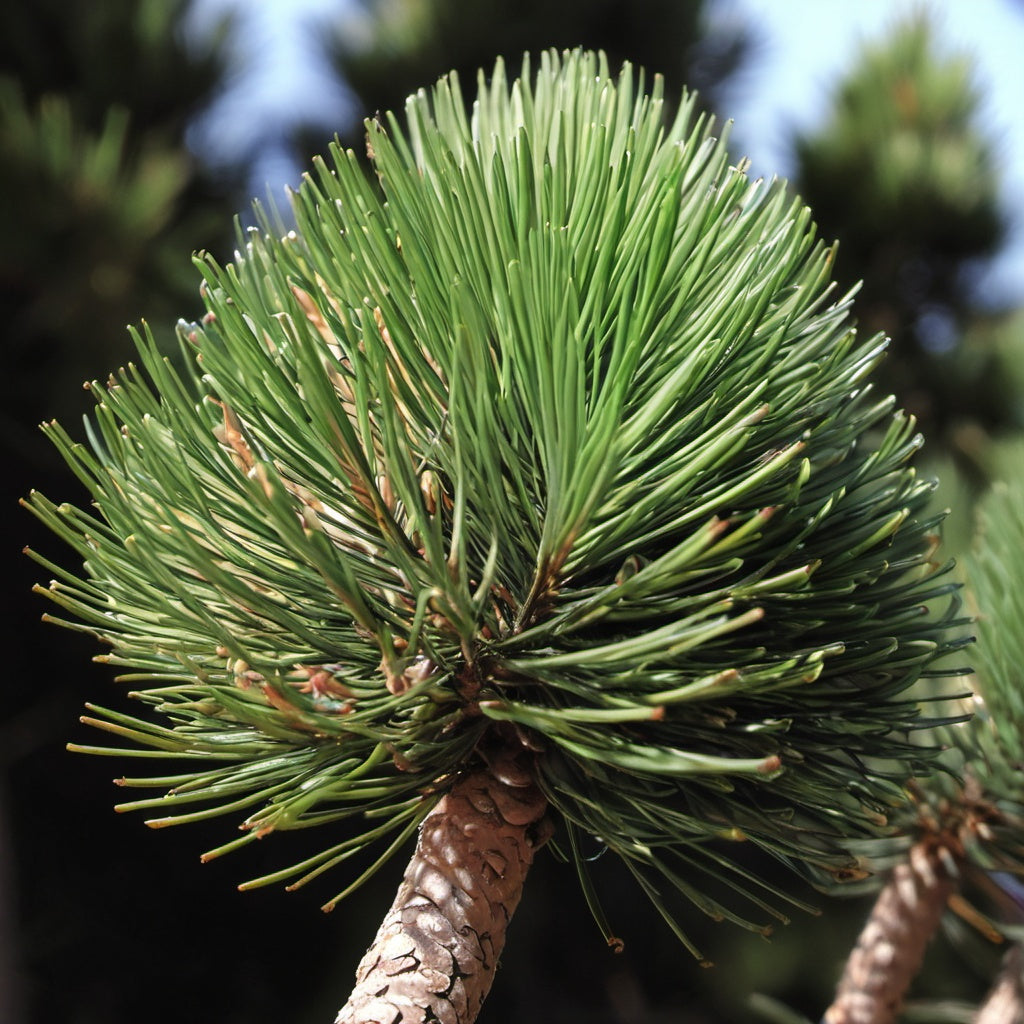Swiss Stone Pine Tree Seeds
Swiss Stone Pine Tree Seeds
Couldn't load pickup availability
Swiss Stone Pine Tree Seeds
(Pinus cembra)
Pinus cembra, commonly known as the Swiss Stone Pine, Arolla Pine, or Stone Pine, is a coniferous tree native to the mountainous regions of central Europe, particularly the Alps and Carpathians. It belongs to the Pinaceae family and thrives in high-altitude environments, often found at elevations between 1,200 and 2,300 meters (3,900–7,500 feet).
Characteristics
- Size: Swiss Stone Pine typically grows to about 30-75 feet in height, with a trunk diameter of up to 4 feet. It has a slow growth rate and a long lifespan, sometimes exceeding 500 years.
- Leaves: The tree has needles that grow in bundles of five, and these are long, soft, and blue-green in color, which helps it adapt to cold climates.
- Cones and Seeds: Its cones are relatively small (5–8 cm in length) and produce large, wingless seeds, commonly called pine nuts. These seeds are an important food source for birds and mammals, particularly the Eurasian nutcracker (Nucifraga caryocatactes), which helps in seed dispersal.
- Wood: The wood of Swiss Stone Pine is known for its high resin content, which makes it aromatic, durable, and resistant to insects and decay. It’s often used in furniture, carving, and interior decoration.
Ecological and Cultural Importance
The Swiss Stone Pine tree plays a vital role in the alpine ecosystems where it grows. It stabilizes soil, reduces erosion, and provides shelter for various animal species. Its seeds are a significant food source for alpine wildlife, and its close relationship with the Eurasian nutcracker aids in natural regeneration, as these birds cache seeds in the ground, promoting new growth.
In addition to its ecological contributions, Swiss Stone Pine has cultural significance in alpine regions. Its wood is traditionally used in furniture making and interior design due to its pleasant scent, which is thought to promote relaxation and improve air quality.
Zones: 2 to 7
Germination Range: 60-80%
Stratification Requirement: Seed requires 60 days warm moist stratification followed by 90-270 days cold moist stratification.
Planting Instructions:
Swiss Stone Pine tree seeds have a tough outer shell and need stratification to break dormancy. Begin by soaking the seeds in warm water for 24 hours. This initial step helps soften the seed coat and prepares it for stratification. After soaking, place the seeds in moist seed starting mix and place the seed and soil mixture into a plastic container. Place the plastic container on a heat seedling mat for 24 hours a day under a growing light for 12-14 hours a day for 60 days. After the warm stratification period is completed, you will need to cold moist stratify the seeds for 90 to 270 days.
Next, place the seeds and soil mixture into a ziplock bag. Place the bag in a refrigerator set between 32°F and 41°F (0°C to 5°C) for approximately 90 to 270 days. This cold stratification mimics winter conditions, allowing the seeds to prepare for germination when temperatures warm up. Check periodically to ensure the medium stays slightly moist but not overly wet, which could lead to mold growth. If mold appears, gently rinse the seeds and change the medium.
After stratification, sow the seeds in small pots filled with a well-draining soil mix, such as a blend of sand, perlite, and a loamy potting soil. Plant the seeds at a depth of about 0.5 inches (1.25 cm), covering them lightly with soil. Place the pots in a bright, indirect light location, and keep the soil consistently moist but not waterlogged. Germination can take several weeks, and patience is key since Swiss Stone Pine can be slow to establish.
Once the seedlings emerge, gradually acclimate them to direct sunlight over several weeks to prevent shock. Continue to water regularly, allowing the top layer of soil to dry slightly between watering. When the seedlings are about a year old and have developed a strong root system, they can be transplanted to a larger pot or directly into the ground if conditions are favorable. Swiss Stone Pine thrives in full sun and well-drained, slightly acidic soil.
Share


